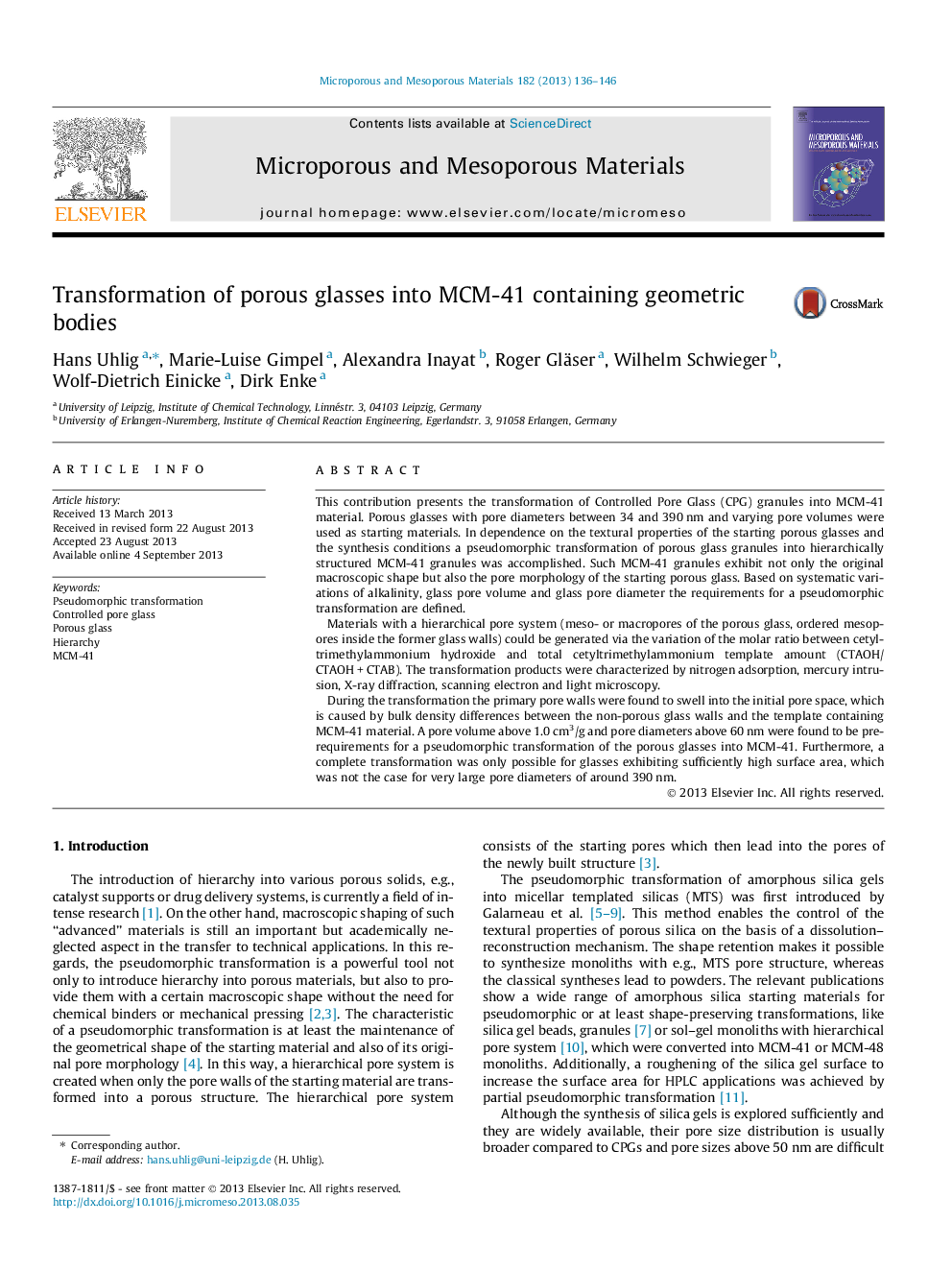| کد مقاله | کد نشریه | سال انتشار | مقاله انگلیسی | نسخه تمام متن |
|---|---|---|---|---|
| 73414 | 49057 | 2013 | 11 صفحه PDF | دانلود رایگان |

• Pseudomorphic transformation of porous glasses into hierarchical MCM-41.
• CTAOH as a new, bifunctional template.
• Textural properties of starting glass and CTAOH amount determine the feasibility of the pseudomorphic transformation.
This contribution presents the transformation of Controlled Pore Glass (CPG) granules into MCM-41 material. Porous glasses with pore diameters between 34 and 390 nm and varying pore volumes were used as starting materials. In dependence on the textural properties of the starting porous glasses and the synthesis conditions a pseudomorphic transformation of porous glass granules into hierarchically structured MCM-41 granules was accomplished. Such MCM-41 granules exhibit not only the original macroscopic shape but also the pore morphology of the starting porous glass. Based on systematic variations of alkalinity, glass pore volume and glass pore diameter the requirements for a pseudomorphic transformation are defined.Materials with a hierarchical pore system (meso- or macropores of the porous glass, ordered mesopores inside the former glass walls) could be generated via the variation of the molar ratio between cetyltrimethylammonium hydroxide and total cetyltrimethylammonium template amount (CTAOH/CTAOH + CTAB). The transformation products were characterized by nitrogen adsorption, mercury intrusion, X-ray diffraction, scanning electron and light microscopy.During the transformation the primary pore walls were found to swell into the initial pore space, which is caused by bulk density differences between the non-porous glass walls and the template containing MCM-41 material. A pore volume above 1.0 cm3/g and pore diameters above 60 nm were found to be prerequirements for a pseudomorphic transformation of the porous glasses into MCM-41. Furthermore, a complete transformation was only possible for glasses exhibiting sufficiently high surface area, which was not the case for very large pore diameters of around 390 nm.
Figure optionsDownload as PowerPoint slide
Journal: Microporous and Mesoporous Materials - Volume 182, 1 December 2013, Pages 136–146